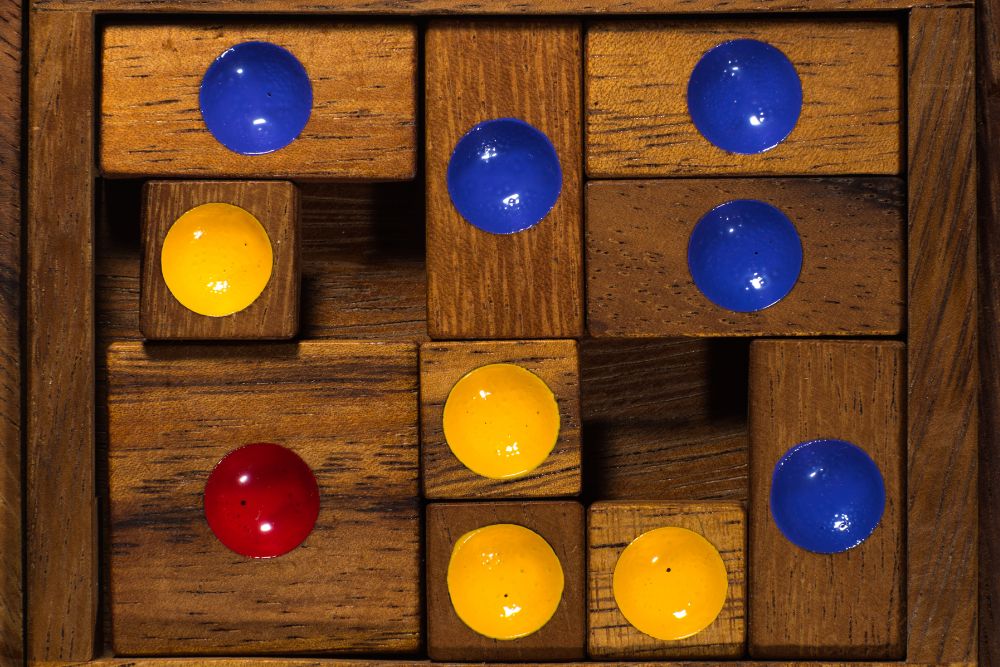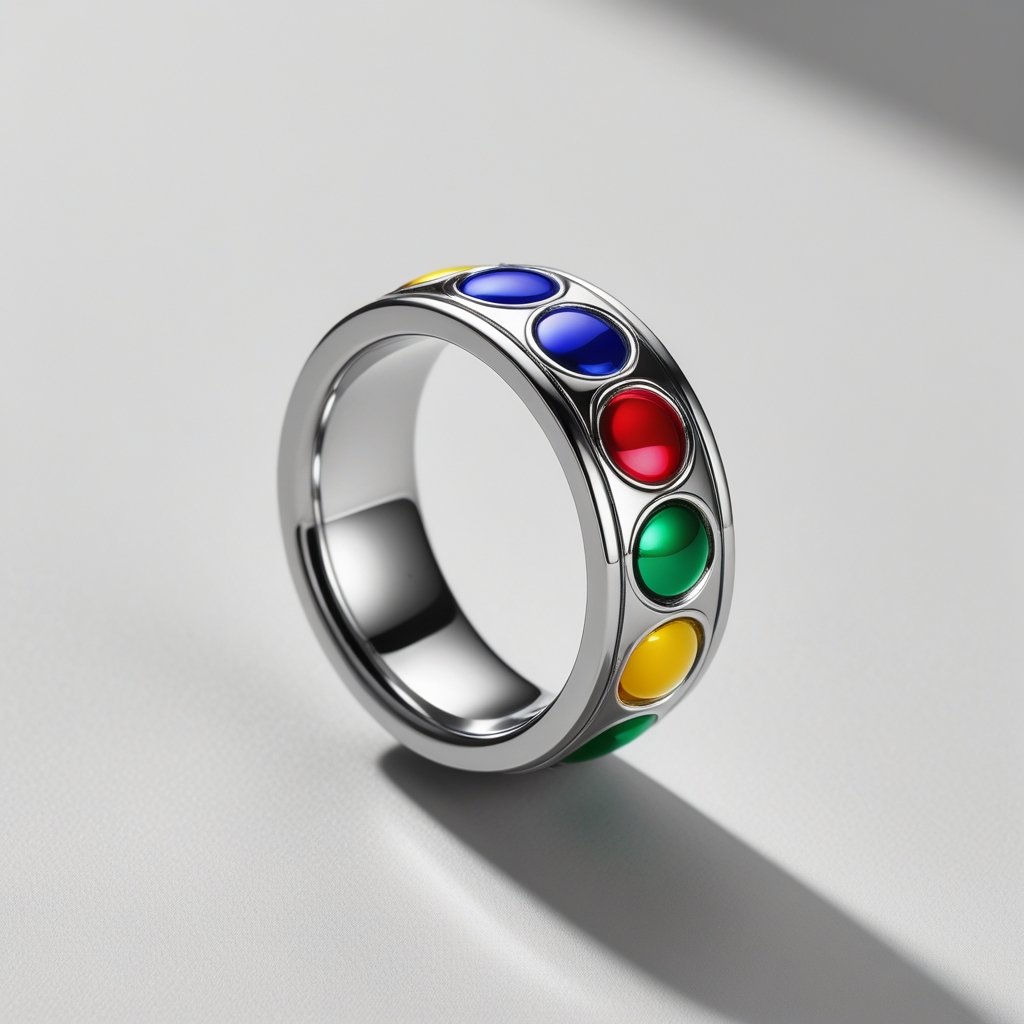The klotski puzzle, a traditional sliding block puzzle that originated in the early 20th century, has captured the interest of puzzle enthusiasts for decades.
The puzzle consists of a rectangular frame containing a unique combination of square and rectangular blocks. To solve the klotski puzzle, players must strategically slide these blocks within the frame to move a specific, larger block from its starting position to an exit gate.
Although klotski puzzles may appear simple at first glance, they can prove quite challenging for even the most experienced puzzle solvers.
Each variation of the klotski puzzle offers a diverse range of obstacles, making it crucial for those who want to master this intriguing game to understand the foundational strategies that can be applied across different configurations.
In this ultimate guide, readers will be introduced to the fascinating world of klotski puzzles, exploring their history, various types available, and effective techniques for overcoming seemingly impossible blocks.
With a foundation in core tactics, puzzle enthusiasts will be well-equipped to tackle any klotski puzzle that crosses their path.
History of Klotski Puzzle
The Klotski puzzle is a captivating sliding block puzzle with a rich history that has been enjoyed for centuries as a form of entertainment and mental stimulation.
Origin
The Klotski puzzle is believed to have originated in the early 20th century, although some sources suggest that it may be even older.
The exact origin of the Klotski puzzle is difficult to trace, but it is widely believed to have been influenced by similar traditional sliding puzzles from various cultures, such as the Chinese “Huarong Dao” and the “Dad’s Puzzler” of the USA.
The name “Klotski” itself is derived from the Polish word for “little block,” as the puzzle consists of a number of small blocks that need to be maneuvered within a confined space to reach the goal.
The Klotski puzzle in its current form typically comprises a rectangular grid featuring one large block, representing the protagonist, and several smaller blocks, each of which can be slid in a specific direction to help the protagonist reach the exit.
The objective is to move the protagonist to the exit in the least number of moves possible.
Over the years, the Klotski puzzle has evolved, giving rise to numerous variations and adaptations that have continued to challenge and enthrall puzzle enthusiasts.
Today, Klotski puzzles can be found both as physical puzzles and as digital games available on various platforms.
Understanding the Klotski Puzzle
The Klotski puzzle is a captivating and challenging sliding block puzzle that has intrigued enthusiasts for decades. Its unique configuration requires a strategic approach to navigate the blocks and achieve the ultimate goal – freeing the largest block from the grid. This section aims to provide better insight into the puzzle’s essential components: the base, blocks, and lid.
Base
The base of a Klotski puzzle serves as the foundation upon which the puzzle is built.
Crafted from a sturdy material such as wood or durable plastic, it features a grid-like structure that typically measures 4×5. The design of the grid accommodates various sized blocks, dictating the allowable movement of each piece.
Understanding the grid’s role is crucial when attempting to solve the Klotski puzzle, as it provides the physical constraints within which the blocks can be shifted. Moving the blocks strategically while considering the base’s layout is a key factor in navigating the puzzle toward a solution.
Blocks
The Klotski puzzle generally consists of a predetermined number of blocks, with each block assigned a unique size and shape. Among the wooden blocks, you can usually expect the following types and sizes:
- 1 large square measuring 2×2 units
- 4 medium rectangles measuring 2×1 units
- 4 small squares measuring 1×1 units
These blocks, which vary in size and appearance, are strategically placed within the grid of the base. The solving process involves maneuvering the blocks across the grid to create a path that allows the largest block to eventually be freed from the puzzle.
Lid
Protecting the blocks and maintaining their predetermined layout, a transparent or translucent lid typically rests atop the Klotski puzzle’s base. The lid is an essential component as it holds the wooden blocks securely in place, preventing them from coming loose or being disrupted during the solving process.
The lid also features a slot or gap, enabling the player to slide the blocks within the grid’s constraints. Its design allows for an unobstructed view of the block arrangement, facilitating the strategic planning required to successfully solve the puzzle.
Different Variations
When it comes to klotski puzzles, there are numerous variations available, offering different levels of difficulty and unique challenges. While the traditional klotski puzzle is known as “Daughter in the Box” or “Sliding Block Puzzle,” numerous other designs exist to pique the interest of enthusiasts.
In “Daughter in the Box,” the objective is to move a single large block representing the daughter to the exit of the 4×5 grid. This grid is filled with other smaller blocks, which need to be manipulated to create a path for the daughter to achieve her escape.

Some common klotski puzzle variations include:
- Pyramid: A triangular-shaped board, where the goal is to move a specific block from one end of the pyramid to the other.
- Chinese Rings: A 5×5 grid where players move various ring-shaped pieces in a series of moves until they can free a central ring.
- Sliding Ladder: With an extended grid that features a 3×7 playing area, the goal is to move the largest piece from one side to the other.
These variations are just a few examples of the different types of klotski puzzles that cater to different skill levels and strategic thinking styles. Each puzzle offers its own set of challenges, requiring players to think critically and use problem-solving skills to reach the objective.
No matter which variation you choose to explore, klotski puzzles provide an engaging and rewarding experience for players of all ages, allowing them to develop cognitive skills and enjoy the satisfaction of overcoming complex challenges.
Strategies and Tips for Solving Klotski Puzzle
The Klotski puzzle can often seem intimidating, but with the right strategies and tips, one can learn to master it. The following section provides some advice to help ensure success in solving Klotski puzzles.
Minimum Number of Moves
Understanding the minimum number of moves required to solve a specific Klotski puzzle can help set a benchmark for your performance. Some simpler puzzles can be solved in as few as 16 moves, while more complex ones may require hundreds of moves.
When first starting with Klotski puzzles, focus on gradually increasing the complexity of the puzzles you attempt. As you improve, try to finish the puzzles within the minimum number of moves.
Strategies
There are several strategies and techniques that can aid in solving Klotski puzzles:
- Work Backwards: Visualize the final position of the puzzle pieces and try to find a clear path for the main block to reach its destination. This can help identify the necessary steps to complete the puzzle.
- Focus on Space and Accessibility: Keep track of open spaces and ensure the main block has access to them. Free space allows the main block to move and reach its destination faster.
- Pattern Recognition: Notice any recurring patterns or sequences of moves in puzzles. Recognizing these patterns can help simplify the overall puzzle-solving process.
Tips and Tricks
Alongside these strategies, there are a few tips and tricks that can make solving Klotski puzzles a more enjoyable experience:
- Stay Patient: Solving some Klotski puzzles can be time-consuming. Be prepared to spend a significant amount of time on challenging puzzles, and maintain patience throughout the process.
- Use Online Tools: There are many online resources and applications that can assist in learning Klotski puzzles. These tools provide step-by-step solutions and can help develop your puzzle-solving skills.
- Practice: Regular practice is the key to becoming proficient at Klotski puzzles. Set aside time for consistent practice and gradually increase the difficulty of the puzzles you attempt.
Tools and Materials
When it comes to tackling a klotski puzzle, having the right tools and materials can be of great benefit. This section will discuss some of the essential items one may consider when attempting to solve these puzzles.
First and foremost is the klotski puzzle itself, available in different designs and materials such as wood or plastic. Ensure whichever version is chosen, it is sturdy and durable to withstand hours of use. Additionally, some klotski puzzles come in varying difficulty levels, suitable for both beginners and advanced solvers.
Working with a klotski puzzle can sometimes require precision and patience. As such, small tools like tweezers or flat-ended toothpicks can be helpful to nudge pieces into place. Keep in mind the importance of using tools that will not damage the puzzle’s material.
Having a level, well-lit surface to work on is also essential, providing ample space for the puzzle, tools, and any reference materials. A desk or table with a non-slip surface is recommended to prevent puzzle pieces from slipping or moving unintentionally.
Speaking of reference materials, it is always useful to have access to resources such as:
- Solution guides, either in physical or digital format
- Online forums or community groups for sharing tips and experiences
- Instructional videos or tutorial articles related to klotski puzzles
Beyond these essentials, solvers may also want to consider personal comfort and preferences. For instance, a small notebook and pen for taking notes or sketching out solutions can be of value in mentally working through the puzzle. Additionally, consider the weight of the puzzle as it may affect the ease and comfort of handling, particularly for extended solving sessions.
Developing the Skills
Mastering a klotski puzzle requires the development of certain skills. These skills not only help in solving the puzzle but also enhance one’s cognitive abilities.
First and foremost, observation is a key skill to develop. It involves paying close attention to the puzzle layout, identifying possible moves, and understanding the interactions between different blocks.
Strengthening this skill can be achieved through consistent practice, gradually improving one’s ability to analyze the puzzle from various perspectives.
The second skill essential for klotski puzzles is planning. This involves creating a step-by-step strategy to reach the target configuration.
Developing the planning skill requires understanding the principles of moving the blocks and being able to foresee the results of each move.
A good practice is to use a trial and error approach, as well as learning from past experiences to fine-tune the plan.
Patience is another crucial skill in conquering klotski puzzles. These puzzles can be challenging and may require multiple attempts to solve.
It’s important not to get discouraged by initial setbacks and remain persistent. Cultivating patience can help avoid frustrations and lead to more efficient problem-solving methods.
Lastly, developing adaptability is crucial in tackling klotski puzzles. As layouts and block arrangements may vary, being able to adapt quickly to new challenges is important.
Key Takeaways
Throughout this ultimate guide, we’ve learned several important aspects of solving a Klotski puzzle. In this section, we will highlight key takeaways to refer back to as you continue your journey.
- Understand the goal: The primary objective is to move the largest block to the exit on the bottom of the puzzle grid.
- Plan your moves: Think several steps ahead before moving the blocks to avoid creating unnecessary complications.
- Observe patterns: As with most puzzles, detecting recurring block arrangements and sequences will help you recognize potential solutions more effectively.
- Prepare for trials: Klotski puzzles can be challenging, so be prepared to attempt multiple solutions before finding the correct one.
- Patience is essential: Solving a Klotski puzzle may take time, even for experienced solvers. Remaining patient and focused is vital to success.
Remember to take advantage of helpful tools and strategies, such as:
| Tool/Strategy | Description |
|---|---|
| Online tutorials | Guides that break down various techniques and share step-by-step instructions on solving Klotski puzzles. |
| Mobile apps | Applications that offer Klotski puzzles, making it easy to practice and learn new strategies from any location. |
| Community forums | Online platforms that connect Klotski enthusiasts, allowing for the exchange of tips, tricks, and personal experiences. |
Incorporating these key takeaways, tools, and strategies into your practice will, in time, help you become an expert in solving Klotski puzzles.




